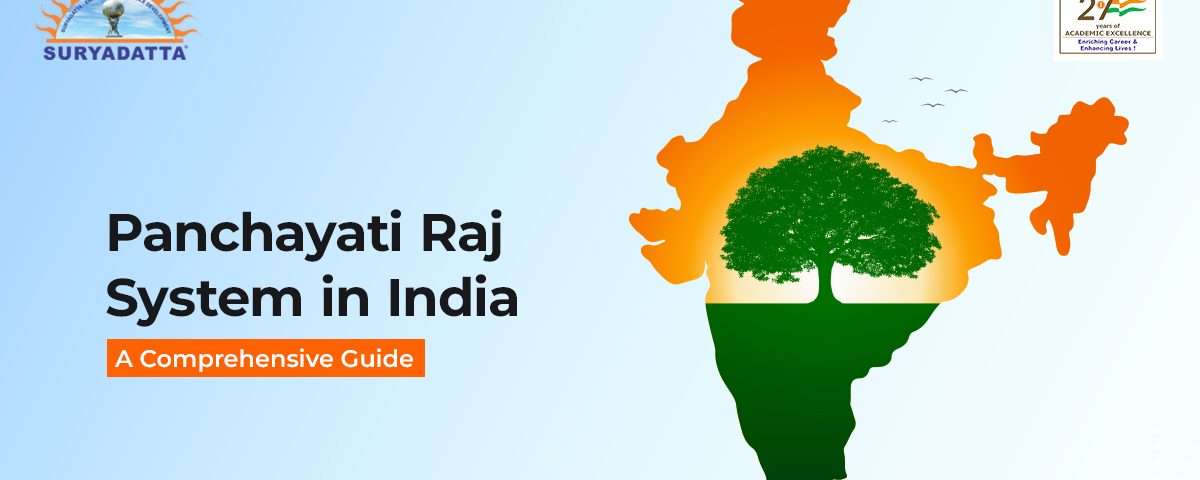Panchayati Raj System in India: A Comprehensive Guide

Need of Electoral Reforms in India – Mr. Vijayadeep Munjunkar
April 27, 2025
Legal Education in Vernacular Languages: Bridging the Gap Between Law and Society
April 27, 2025The Panchayati Raj system is one of the most significant milestones in India’s journey towards decentralized governance. Rooted in the traditions of ancient India, it has evolved into a structured framework under the Constitution to ensure participatory democracy at the grassroots level. This blog provides an in-depth overview of the Panchayati Raj system in India, exploring its history, structure, functions, and importance in modern governance.
What is the Panchayati Raj System?
The Panchayati Raj system is a three-tier structure of local self-government in rural India, established to empower communities and promote sustainable development. The system aims to bring governance closer to the people, allowing for greater participation, transparency, and accountability in decision-making processes.
Historical Background
The roots of the Panchayati Raj system trace back to ancient India, where village assemblies, known as Sabhas or Panchayats, played a vital role in local administration. However, the modern Panchayati Raj system emerged post-independence.
Key milestones in its evolution include:
- 1949: The Constitution of India recognized the importance of self-governance in Article 40, which directs states to organize village Panchayats as units of self-government.
- 1957: The Balwant Rai Mehta Committee recommended the establishment of a three-tier Panchayati Raj system.
- 1992: The 73rd Constitutional Amendment Act institutionalized Panchayati Raj as a constitutional mechanism, making it a cornerstone of local governance.
The Structure of the Panchayati Raj System
The Panchayati Raj system operates at three levels, ensuring effective governance across the rural landscape:
1. Gram Panchayat (Village Level)
- The Gram Panchayat is the foundation of the Panchayati Raj system.
- It consists of elected representatives, led by a Sarpanch.
- Responsibilities include maintaining village infrastructure, providing basic amenities, and implementing welfare schemes.
2. Panchayat Samiti (Block Level)
- This is the intermediary level of governance.
- It coordinates activities across multiple Gram Panchayats within a block.
- Key functions include planning and executing development projects.
3. Zila Parishad (District Level)
- The Zila Parishad is the apex body in the system.
- It oversees and monitors the work of Panchayat Samitis.
- Its primary role is to align district-level development initiatives with state and national goals.
Key Features of the Panchayati Raj System
- Democratic Decentralization: Power is devolved to the lowest levels, enabling active participation by citizens.
- Periodic Elections: Representatives at all levels are elected every five years.
- Reservation of Seats: Provisions exist for the reservation of seats for Scheduled Castes, Scheduled Tribes, and women to promote inclusivity.
- Financial Autonomy: Panchayats can generate revenue through taxes, grants, and funds allocated by state governments.
- Accountability Mechanisms: Transparency and accountability are ensured through audits, social audits, and citizen participation.
Functions of the Panchayati Raj System
The Panchayati Raj system has multifaceted roles aimed at holistic rural development.
1. Administrative Functions
- Maintaining public infrastructure, such as roads and water supply.
- Managing public health and sanitation services.
2. Developmental Functions
- Implementing agricultural and rural development programs.
- Promoting education and skill development initiatives.
3. Judicial Functions
- Resolving local disputes through Nyaya Panchayats (village courts).
4. Social Welfare Functions
- Facilitating welfare programs for marginalized groups, including women and children.
- Ensuring the proper implementation of employment and poverty alleviation schemes.
Challenges Facing the Panchayati Raj System
Despite its constitutional foundation, the Panchayati Raj system faces several challenges:
- Inadequate Financial Resources: Limited revenue generation capabilities hamper the implementation of development projects.
- Lack of Awareness: Many rural citizens are unaware of their rights and the functions of Panchayats, leading to underutilization of resources.
- Political Interference: Local governance often faces undue influence from higher political bodies.
- Capacity Building: Insufficient training and education for Panchayat representatives affect effective decision-making.
Significance of the Panchayati Raj System
- Empowerment of Rural Communities: By involving citizens in decision-making, the system fosters a sense of ownership and responsibility.
- Balanced Development: It ensures equitable distribution of resources and attention to underdeveloped areas.
- Promotion of Democracy: The system serves as a platform for democratic participation at the grassroots level.
- Improved Governance: It brings transparency, accountability, and efficiency to rural administration.
The Role of Law in Strengthening the Panchayati Raj System
Legal frameworks play a pivotal role in ensuring the success of the Panchayati Raj system. Provisions under the Constitution, along with state-specific legislations, govern its functioning. The role of lawyers and legal professionals is critical in:
- Advising Panchayats on legal compliance.
- Resolving disputes related to governance.
- Advocating for policy changes to address systemic challenges.
Pursue a Legal Career at Suryadatta Law College (SLC), Pune
For aspiring legal professionals passionate about governance and law, Suryadatta Law College (SLC), Pune, offers an exceptional platform to build a successful career.
Why Choose Suryadatta Law College (SLC)?
- Affiliation and Recognition: SLC is affiliated with Savitribai Phule Pune University, approved by the Bar Council of India, and recognized by the Government of Maharashtra.
- Comprehensive Courses: The B.A. LL.B. (5-year) program combines legal education with a strong foundation in arts, ensuring holistic learning.
- Exceptional Faculty: Learn from experienced legal educators who provide practical insights and in-depth knowledge.
- Focus on Practical Exposure: SLC emphasizes moot courts, legal aid clinics, and internships to prepare students for real-world challenges.
Shape Your Future in Law
Suryadatta Law College is committed to nurturing the next generation of legal professionals. Whether you aspire to work in governance, judiciary, or corporate law, SLC equips you with the skills and knowledge to excel.
Conclusion
The Panchayati Raj system is a cornerstone of India’s democratic framework, empowering rural communities and promoting sustainable development. As the system continues to evolve, legal professionals have a pivotal role in addressing its challenges and driving meaningful reforms.


